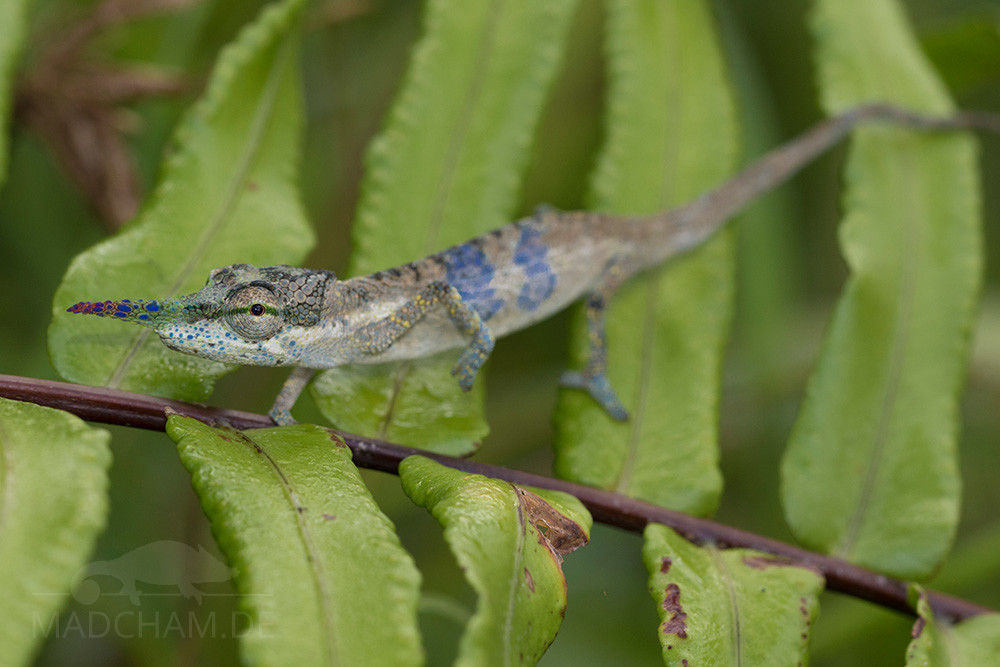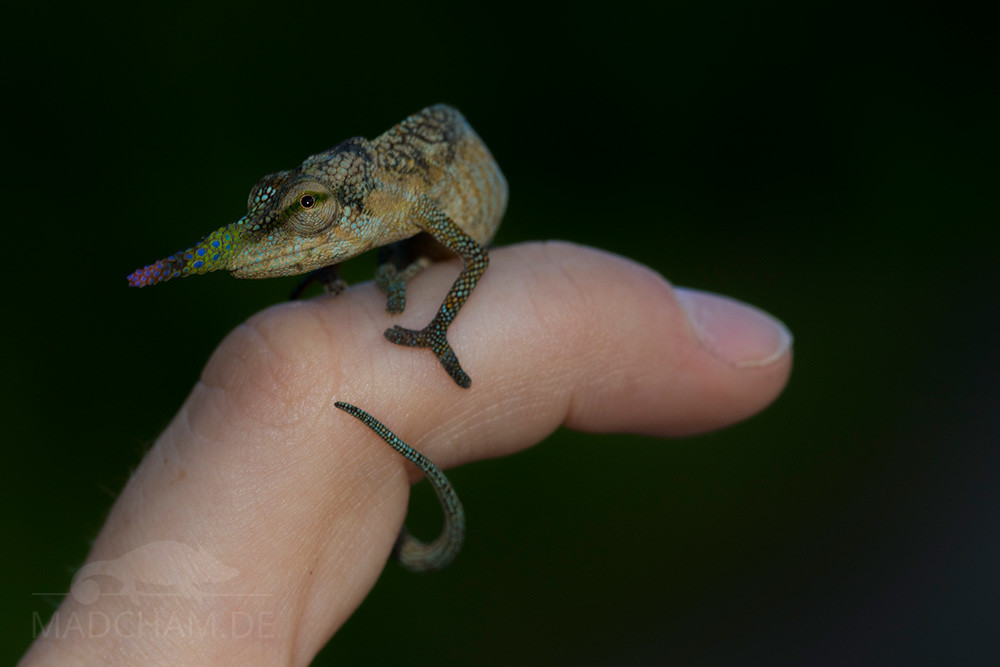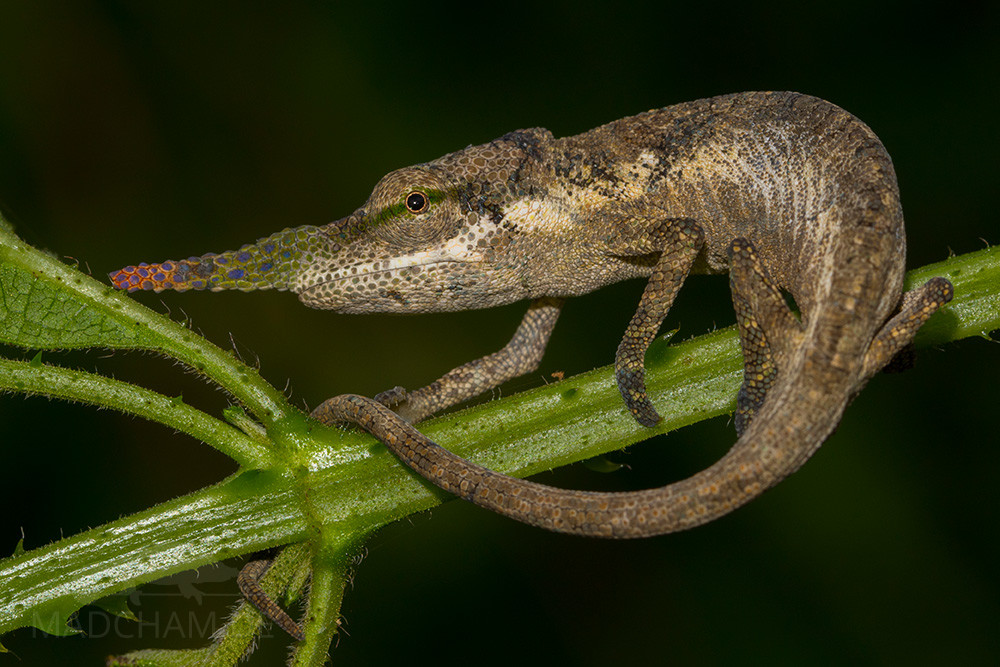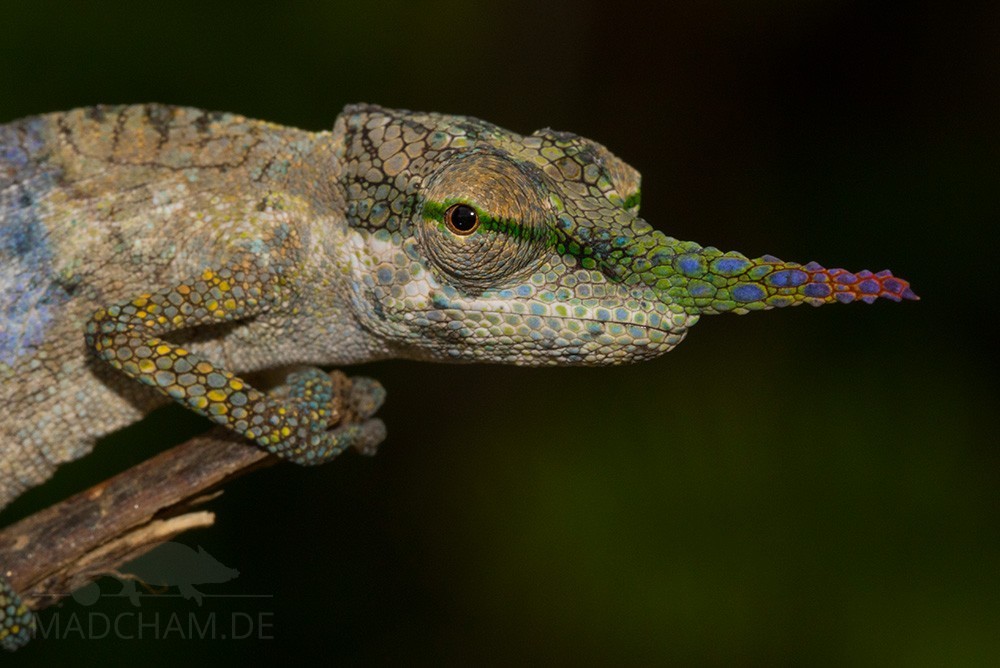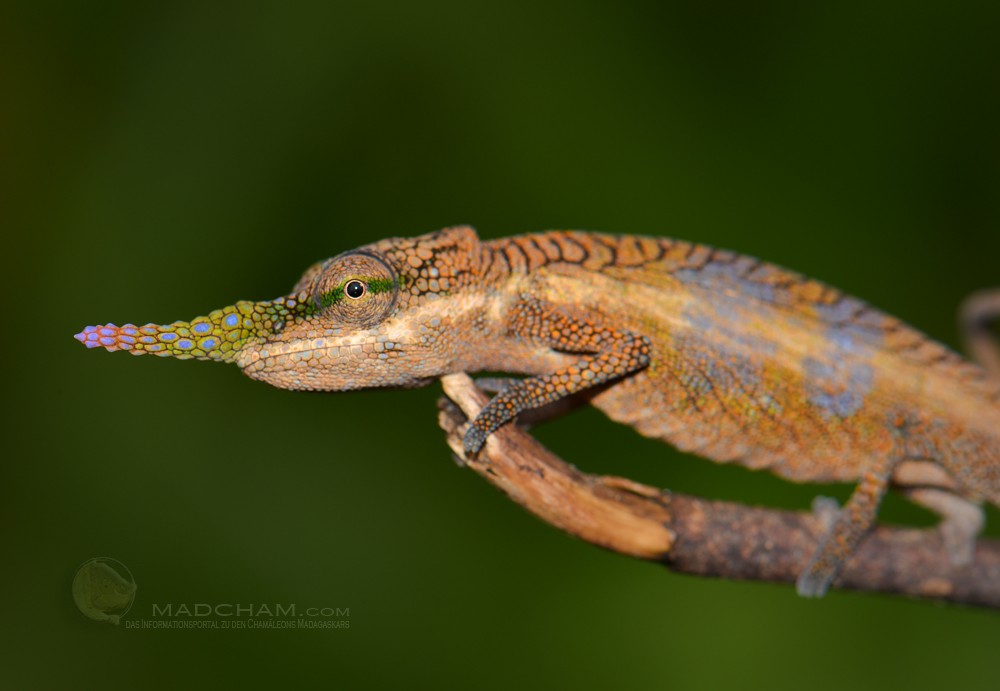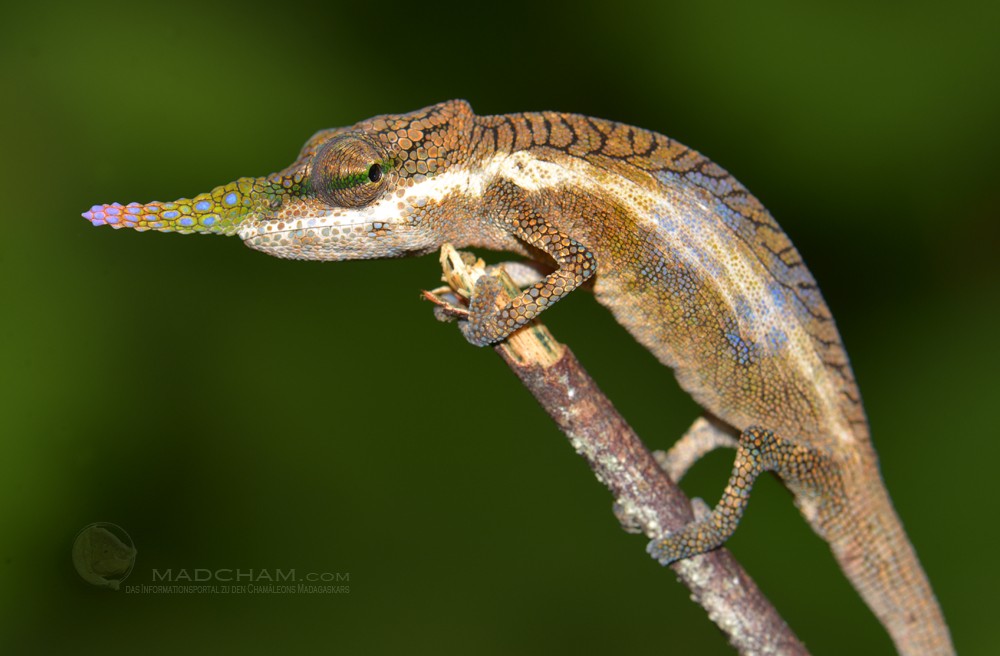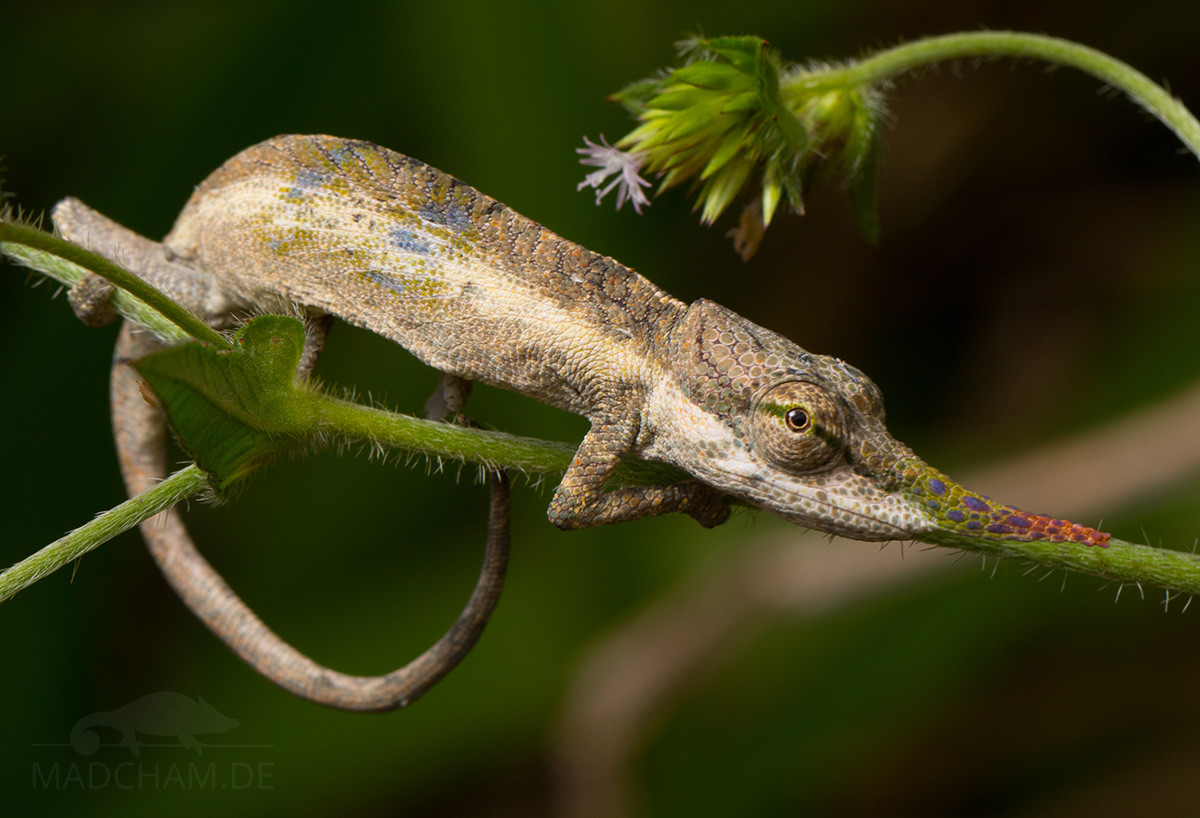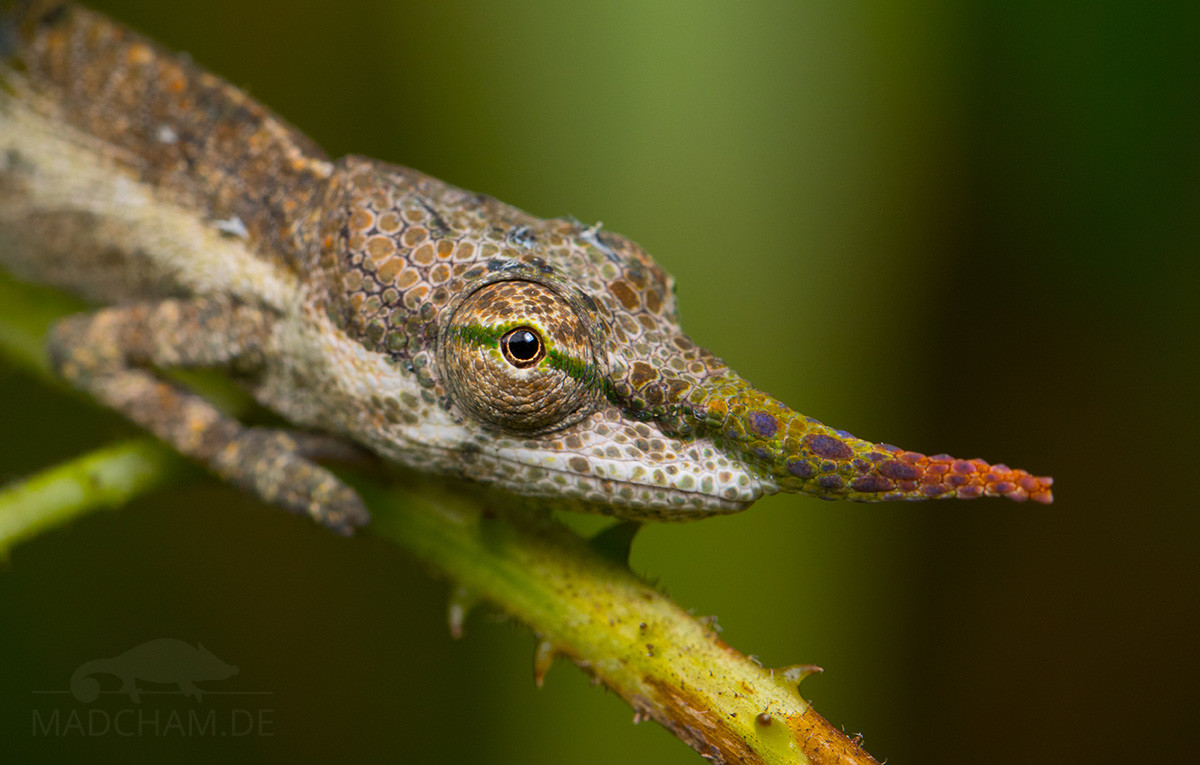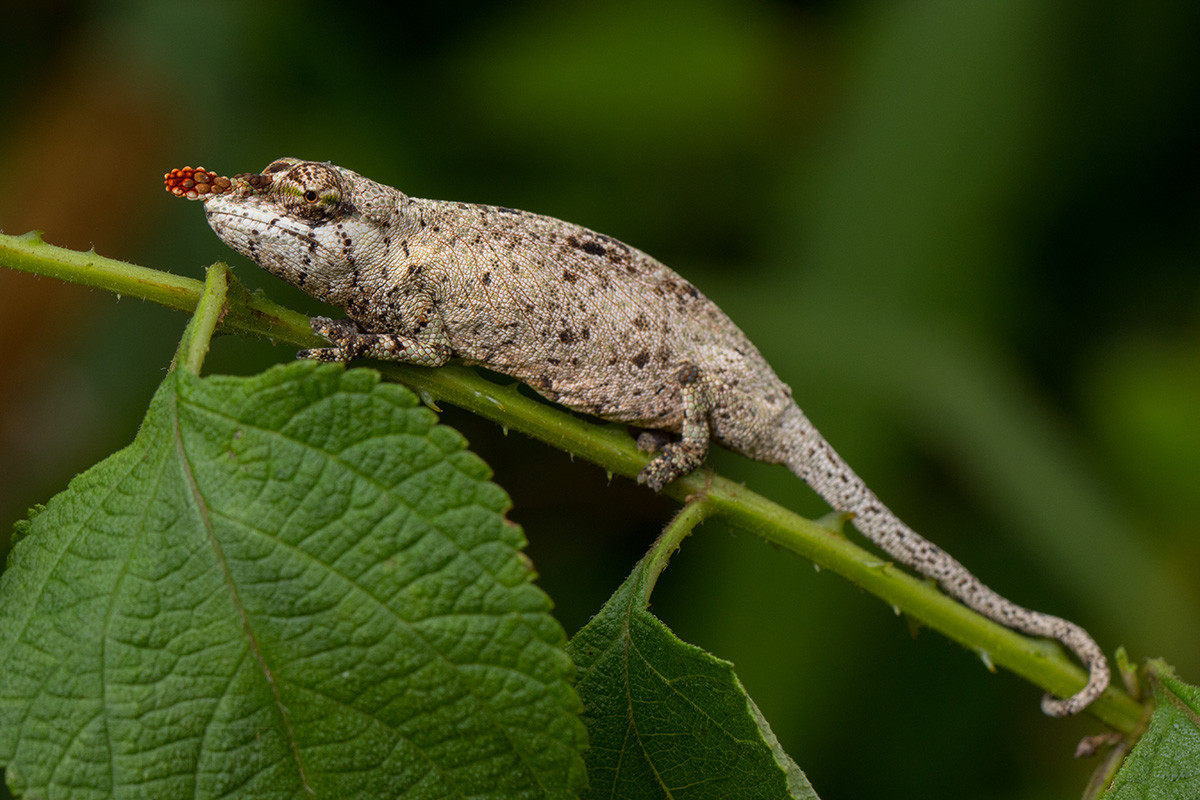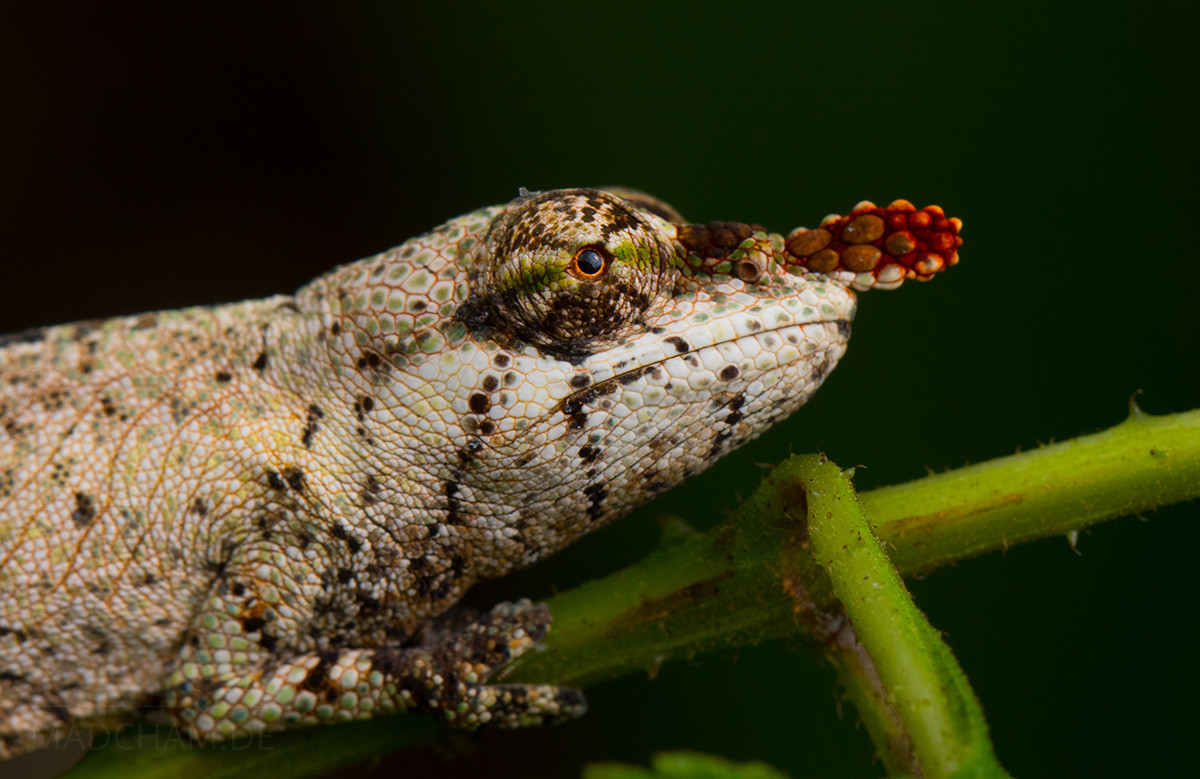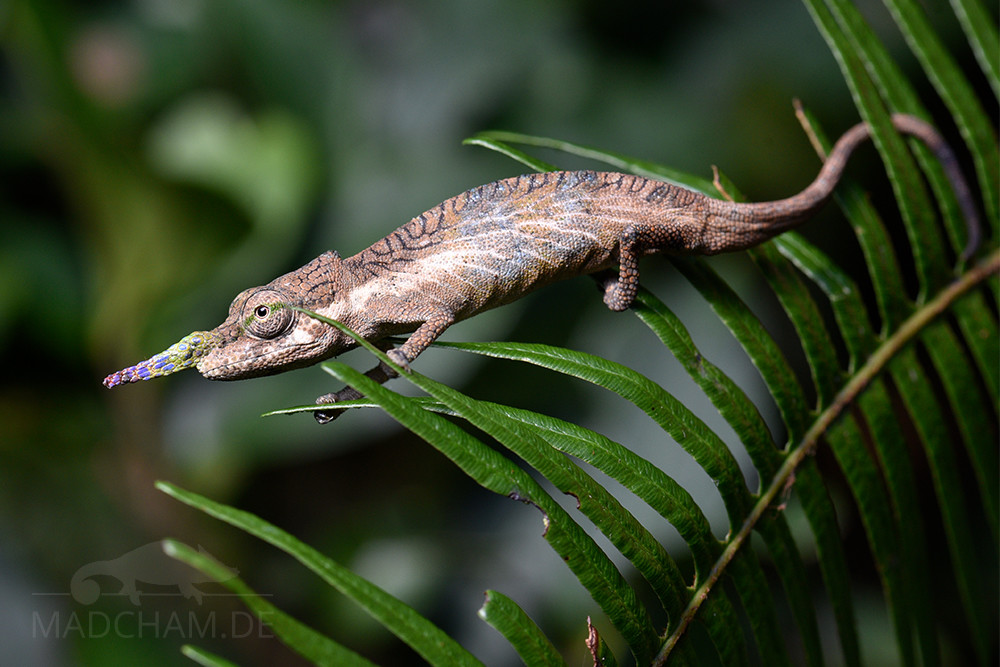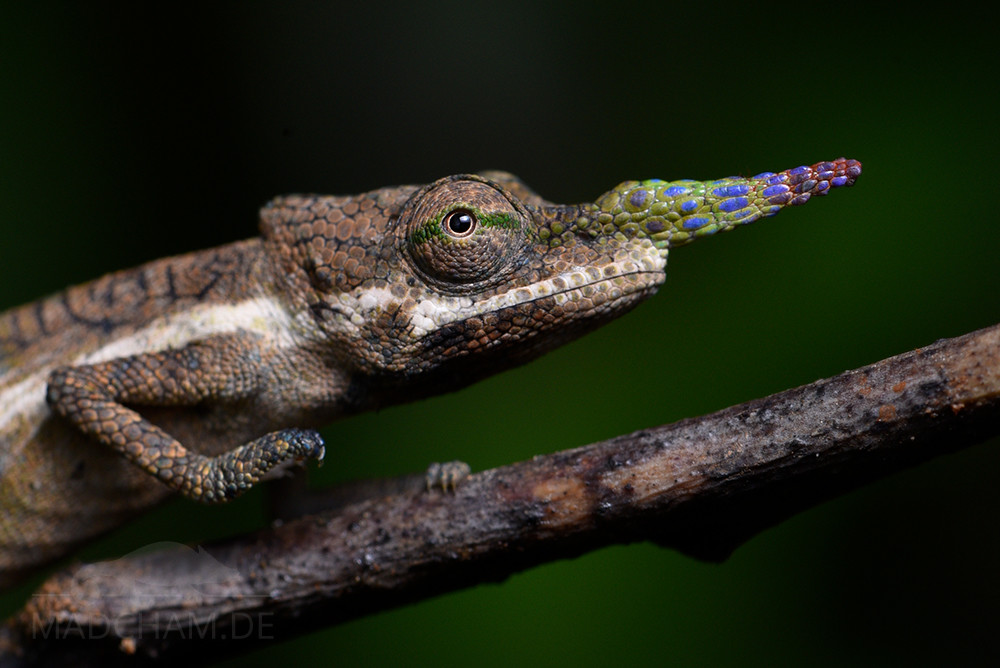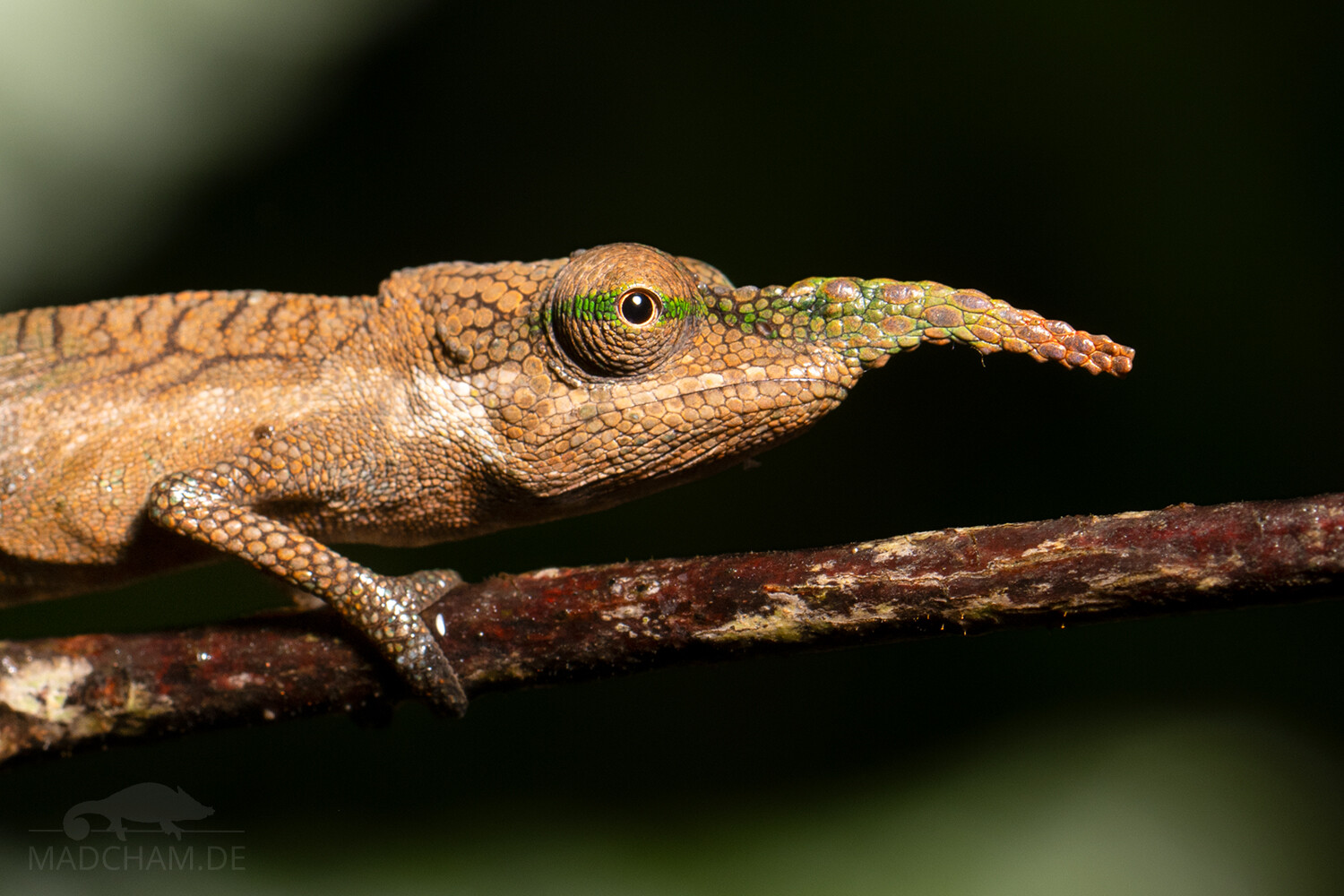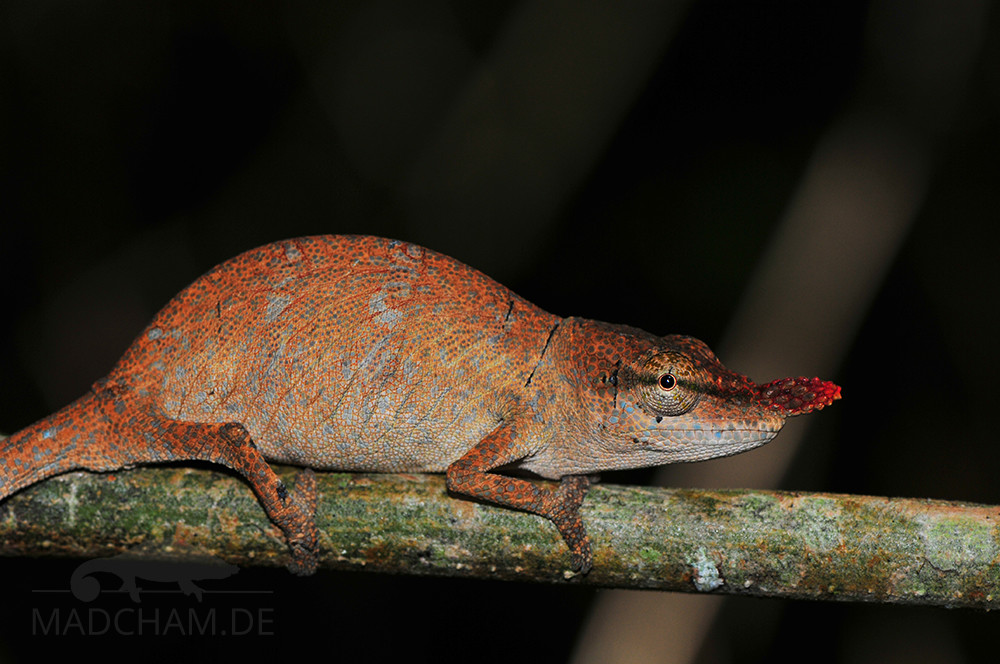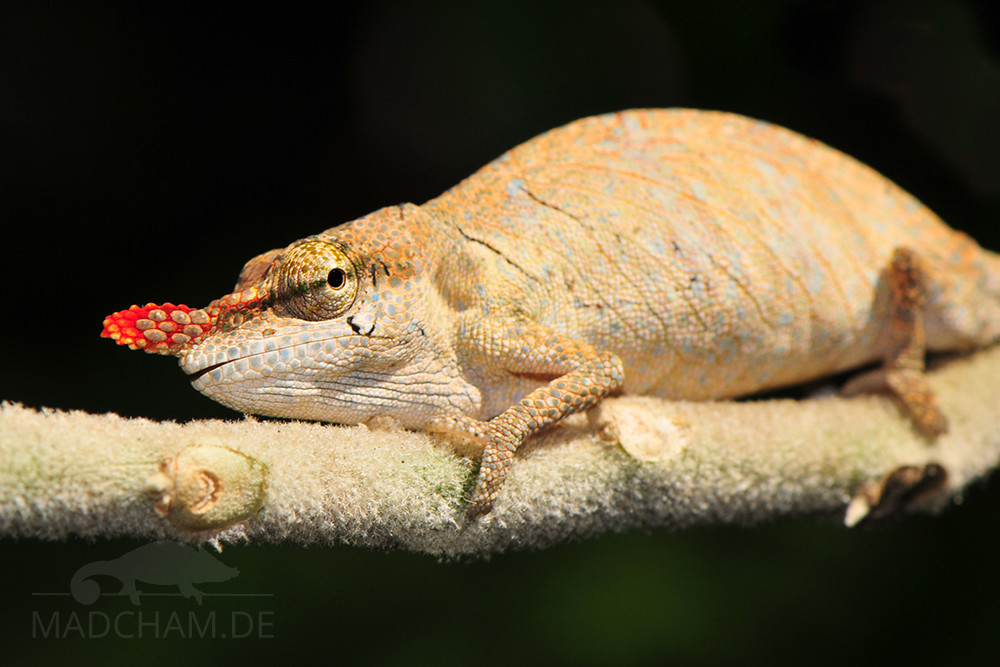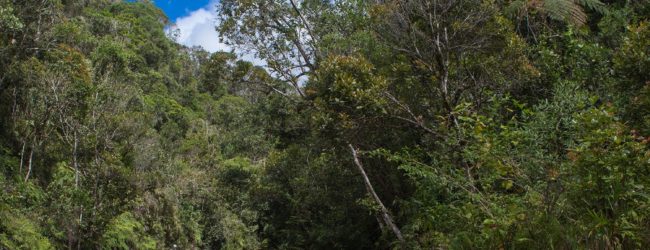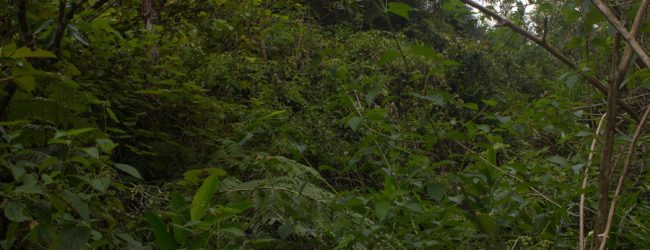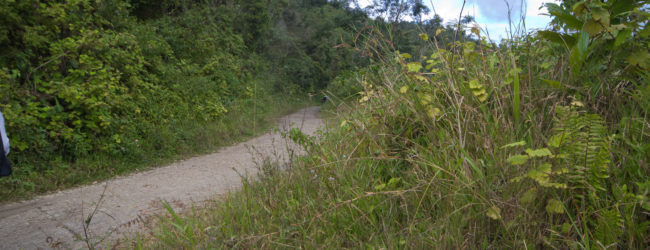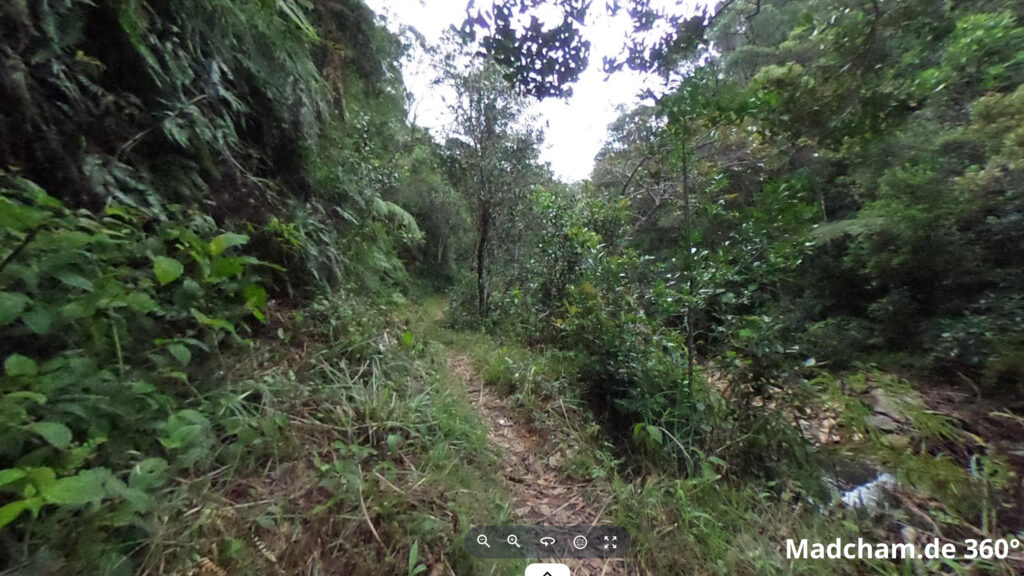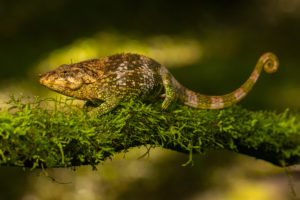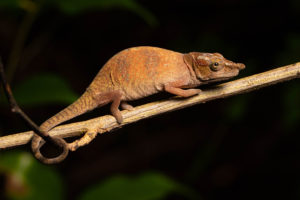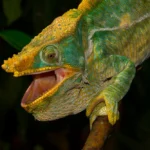no legal export possible
First description:
Glaw, Agne, Prötzel, Gehring, Köhler, Preick, Ratsoavina, Straube, Wollenberg Valero, Crottini & Vences, 2025 ![]()
Origin of the species name:
Frank Glaw from the Bavarian State Collection of Zoology in Munich, together with many co-authors, named the small chameleon after its striking nasal appendage, which resembles the long nose of the children’s book character Pinocchio. Pinocchio was invented in 1883 by Italian author Carlo Collodi (actually Carlo Lorenzini) and became famous worldwide first with his children’s books, then later with the Disney film adaptation in 1940. Pinocchio is a wooden puppet who comes to life in Collodi’s stories and experiences numerous adventures. What is special about Pinocchio is his nose: when he lies, his nose grows longer and longer. Until 2025, this species was considered to be Calumma gallus. This “incorrect” species name was used for more than a hundred years. It was only genetic testing in 2025 that revealed that another, very similar species is actually the “real” Calumma gallus. Therefore, this little chameleon needed a new species name of its own.
Distribution:
Calumma pinocchio inhabits rainforests and secondary vegetation on the central east coast of Madagascar. The animals are often found in secondary vegetation with a high proportion of ferns, preferably at the edge of rainforests. Many of the habitats they inhabit are on slopes and difficult to access. In addition, the vegetation in the habitats of Calumma pinocchio is extremely dense, making it very difficult to find these small chameleons. We have also discovered this species at a height of two metres. Chameleons from sites near Mahavelona may represent a separate species; their status is still unclear.
Appearance and size:
With a total length of around 11 cm, this species belongs to the small chameleons. The males have a long, pointed and elastic nasal appendage covered with blue, purple and green dots. Each nose is unique; no two are exactly alike. Most noses point upwards, but we have also observed ‘drooping’ noses. Normally, the animals are brown-grey, but when relaxed, the males can become almost white with light blue markings. In females, the nasal appendage is shorter, leaf-shaped and red. Pregnant females have blue dots on their heads. Otherwise, their colour is brown-beige, turning dark brown when stressed. The helmet is flat but clearly separated from the back. In Vohidrazana, the females of Calumma pinocchio have slightly longer nasal appendages, as shown in the following two photos.
| Jan | Feb | Mar | Apr | May | Jun | Jul | Aug | Sep | Oct | Nov | Dec | |
| Average temperature | 23 | 24 | 23 | 24 | 21 | 19 | 19 | 19 | 20 | 21 | 22 | 23 |
| Minimum temperature | 20 | 20 | 20 | 19 | 18 | 15 | 15 | 15 | 15 | 16 | 18 | 19 |
| Maximum temperature | 27 | 27 | 27 | 27 | 25 | 23 | 23 | 23 | 24 | 25 | 26 | 27 |
| Rain days | 27 | 24 | 26 | 19 | 17 | 18 | 21 | 20 | 15 | 16 | 20 | 25 |
We have collected the data given above over several years with thermometers and hygrometers at the finding places of the chameleons. "Average temperature" means that values of a whole month have been calculated to one average value per month. For example all measured minimum temperature values of February have been calculated to one average minimum temperature for February. In plain language, this means single peak values of a day may be a little higher or lower than the average minimum and maximum temperatures. It is possible that a location has an average maximum temperature of 29°C, but one day during that month it had 33°C or even 35°C there.
Examples of daily patterns of temperatures in Vohimana during the rainy season can be found below. They were recorded in 2023/24 with data loggers.
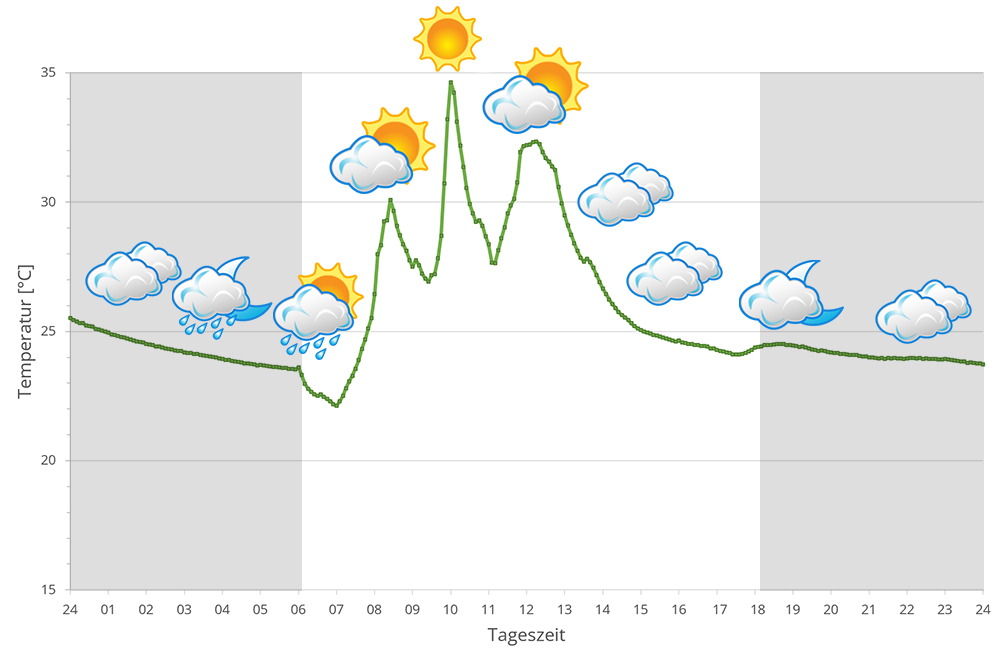

Climate in Vohimana is comparable to region Andasibe-Mantadia. It is also located in eastern highlands on eleveations about 1000 m above sea level. Accordingly, nights can become rather cool with temperatures around 15°C.
During rainy season, it rains daily and intensively. Temperatures reach 25 to 28°C during daytime, in sunny places a little more. In dry season, temperatures are lower and it does not rain daily but still regularly. In 2023/24, we measured relative humidity with data loggers on several days in Vohimana during the rainy season, the data can be found below.
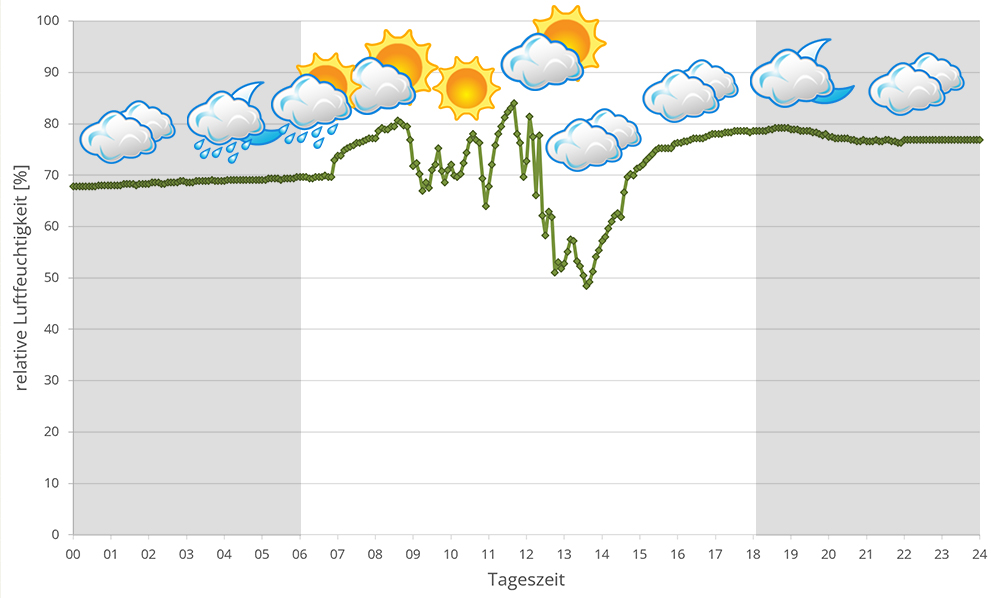
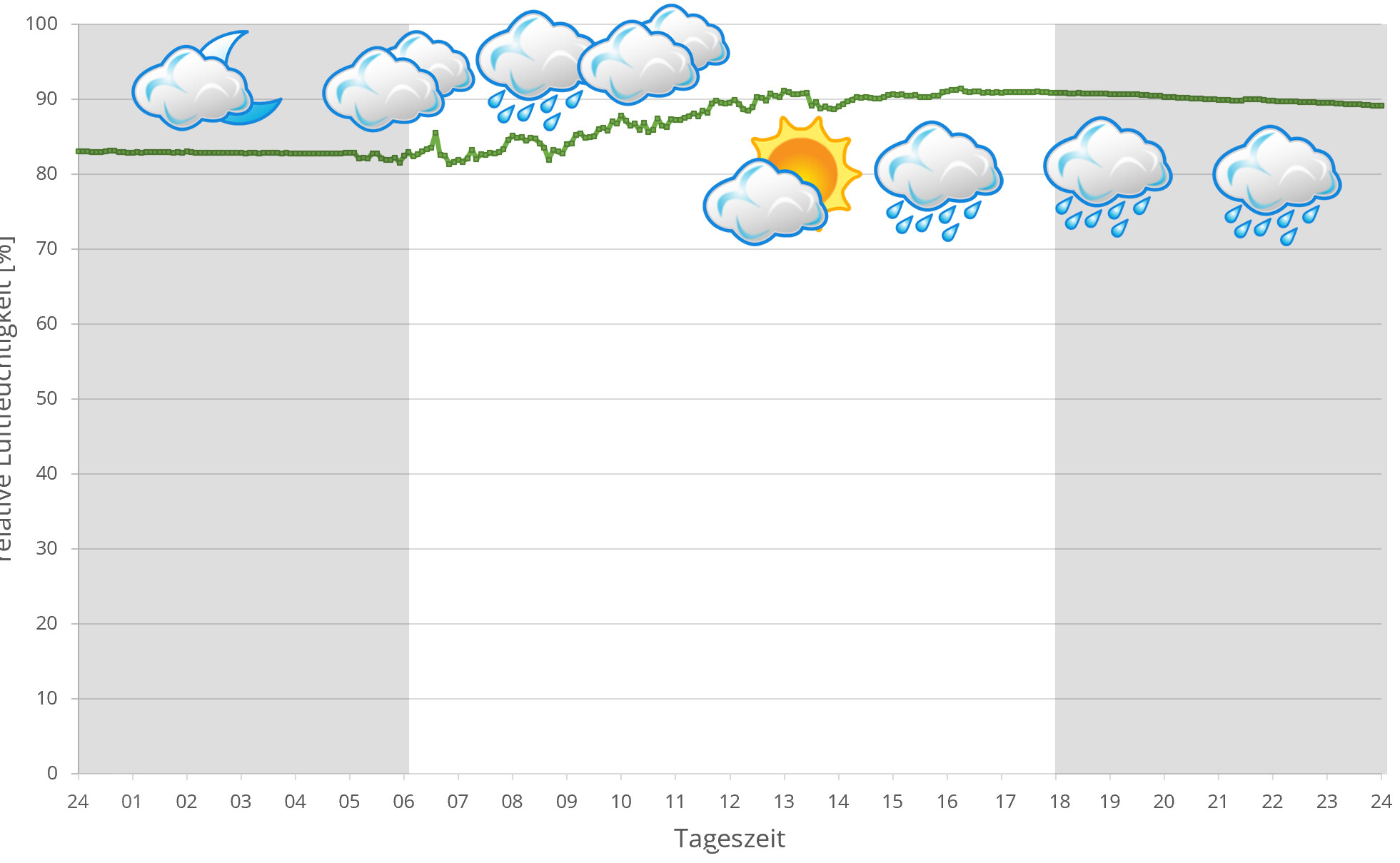

 Tageszeit = day time, Sonne = sun, Halbschatten = half shade, Schatten = shade
Tageszeit = day time, Sonne = sun, Halbschatten = half shade, Schatten = shade
We have measured UVB data with a Solarmeter 6.5 in spring (beginning of April) at the peak of activity of chameleons in Madagascar. We always measured the values that a chameleon could maximally reach in its habitat.
In 2023, in addition to other climate data, we also measured the air pressure at the locations we visited in Madagascar. The following data is from a full day during the rainy season in Vohimana. On the X-axis is the time of day or night. In Madagascar, the day begins around 6 am and night falls at 6 pm. TheY axis shows the atmospheric pressure in hPa.


Habitat:
The following pictures show the habitat of Calumma pinocchio at the rainy season in Vohimana. Some are even from finding places of this species. The habitat of this species consists of extremely dense bushes and thin trees. The ground is completely covered with ferns. The animals prefer to live right in the middle of these shrubs, between endless thin twigs and small-leafed plants. In many places, spiny plants are also among the shrubs but do not seem to bother this species.
Below you will find some 360° images from Vohimana that we took during the rainy season. If you click on the respective image, the pictures will open in an enlarged view in a separate window. You can use the mouse to rotate in all directions. You also have the option of running the images in full-screen mode. Enjoy!


